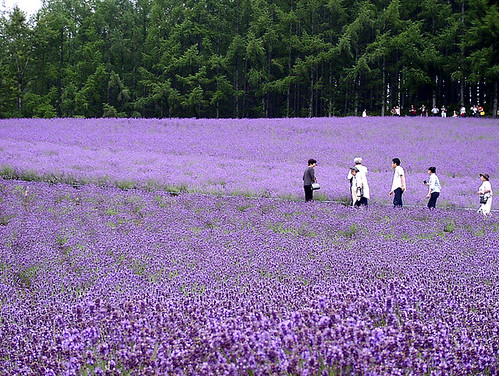Of Silage, Space and Earth
 If Kelly Caleche is the more available counterpoint of Rose Ikebana, Terre d'Hermès mirrors Hermessence’s Vetiver Tonka – albeit far less nutty and sweet. This of course could be a good thing if you dislike the gourmand references of Vetiver Tonka (roasted hazelnuts, dried fruit and cereal notes) I have to say it’s interesting to see the increased usage of this note in perfumery, both niche and mass-marketed. Surely there are some economical factors involved: vetiver is a cheap and renewable resource, providing a precious wood aroma that is dirt-cheap in comparison to notes from the same category. Yet to me it seems like a trend that reflects in part the movement towards healing of the earth as well as its earth dwellers, vetiver being a scent that evokes tranquility and a sense of well-being. Vetiver also helps the environment – not only by protecting lands from erosion (especially in areas prone to floods); the plant has a way of sucking toxins from the earth and purifying or filtering them, resulting in a cleaner environment.
If Kelly Caleche is the more available counterpoint of Rose Ikebana, Terre d'Hermès mirrors Hermessence’s Vetiver Tonka – albeit far less nutty and sweet. This of course could be a good thing if you dislike the gourmand references of Vetiver Tonka (roasted hazelnuts, dried fruit and cereal notes) I have to say it’s interesting to see the increased usage of this note in perfumery, both niche and mass-marketed. Surely there are some economical factors involved: vetiver is a cheap and renewable resource, providing a precious wood aroma that is dirt-cheap in comparison to notes from the same category. Yet to me it seems like a trend that reflects in part the movement towards healing of the earth as well as its earth dwellers, vetiver being a scent that evokes tranquility and a sense of well-being. Vetiver also helps the environment – not only by protecting lands from erosion (especially in areas prone to floods); the plant has a way of sucking toxins from the earth and purifying or filtering them, resulting in a cleaner environment.That being said, the name of the fragrance at hand is quite appropriate: it has enough vetiver in it to deep it earthy. Terre d'Hermès has the very Elena-esque way of excuding sophistication by way of having a lot of space within it. Almost as if fearing that adding too much décor to the space will result in a lesser impression of how expensive that mansion was. Better leave it empty and maintain the wow factor… It’s hard to “read” any of Jean-Claude Elena’s recent scents without noticing the element of status flying off their “pages”. Aside from the great breath of air that each provides, status is perhaps the most dominant “note” in the composition. It’s a quality that is hard to put the finger on its exact source but you just feel is there.
Terre d'Hermès opens both citrusy and peppery; peppery perhaps in a similar way to Poivre Samarkand. The enormous amount of space between the notes makes it difficult to discern and at certain point even notice. Although it does morph slightly, it does not change its mood from one phase to the others and doesn’t really hold big surprises in the end. Vetiver emerges pretty early, once the citrus and pepper calm down a bit. It starts cool and only would warm up very little by the end there is even a glimpse of moss. But more importantly than any particular note, it can be described as being at once dry, fresh, cool and salty, which is what gives it its edge and ultimate appeal.
It feels invisible or sheer when smelled close to the skin, barely detectable. Yet the fragrance certainly creates a noticeable silage that can be detected from afar (by others, not the wearers); which is something I find strange. Perhaps I’m prejudiced, but there is something about it that, just like other scents by Elena, leaves me cold. Perhaps I am too stuck on the classical perfume structures, where the intertwining notes lead us from one chapter to the next (intriguing opening and than gradual unraveling of the components, revealing the core and than the base). While this does happen in Elena’s scents, it happens at a different pace than that which I’m familiar or feel at home in. The changes are subtle and vastly spaced, a phenomenon that I have first observed and was able to appreciate in non other than Roudnistaks’ Le Parfum de Therese
As a perfumer I may not feel at ease with Elena’s cerebral approach; and from the personal-taste aspect I may feel foreign to his uber-elegant, minimalist, abstract style (Vetiver Tonka is perhaps the only fragrance he created that I wear). However, I have to say to his credit that he does make one think. Maybe perfumes don’t need to conjure any strong emotions. Maybe they don’t need to always be directly connected to exotic locales. Maybe a perfume can just be a perfume and be nearly entirely foreign and detached from the collective consciousness, thus creating something new and enter it from a different angle.
 Top notes: Grapefruit, Orange, Pepper, Pink Pepper
Top notes: Grapefruit, Orange, Pepper, Pink PepperHeart notes: Flint, Mineral notes, Cedarwood
Base notes: Vetiver, Patchouli, Benzoin, Oakmoss
You may be interested to read other reviews of Terre d’Hermès, which were of course written when the scent was new and fresh, when I was busy ignoring it and the hype around it. I found it interesting to read the reviews now in comparison to my impressions and see how each reviewer had at least one thing in common and one thing different to say about this fragrance:
Bois de Jasmin
Now Smell This
Scentzilla
Image credits: Both are screenshots that I took from Hermes' commercial video for Terre d'Hermes. It's one of those rare instances where the commercial actually does fit the feel of the fragrance.










